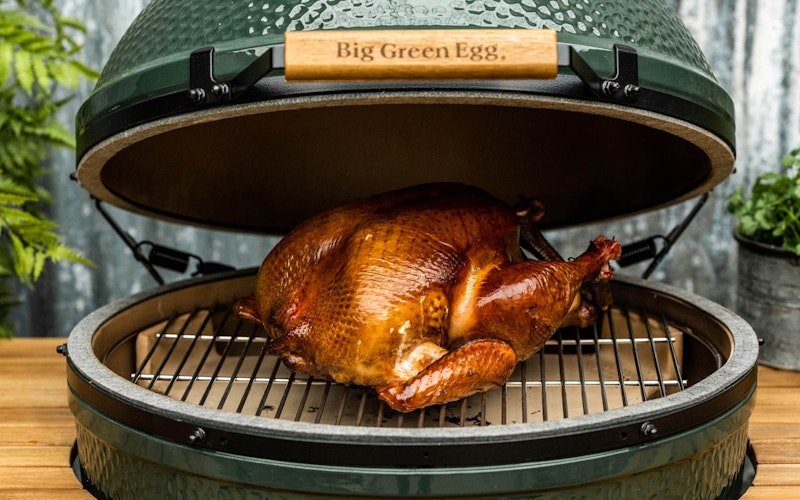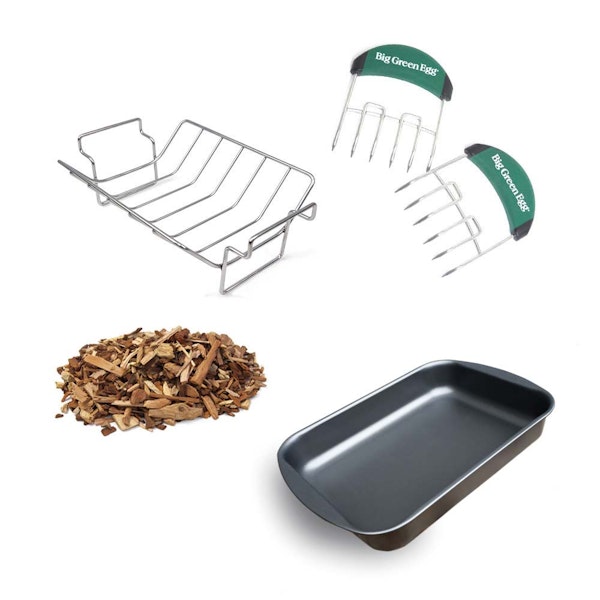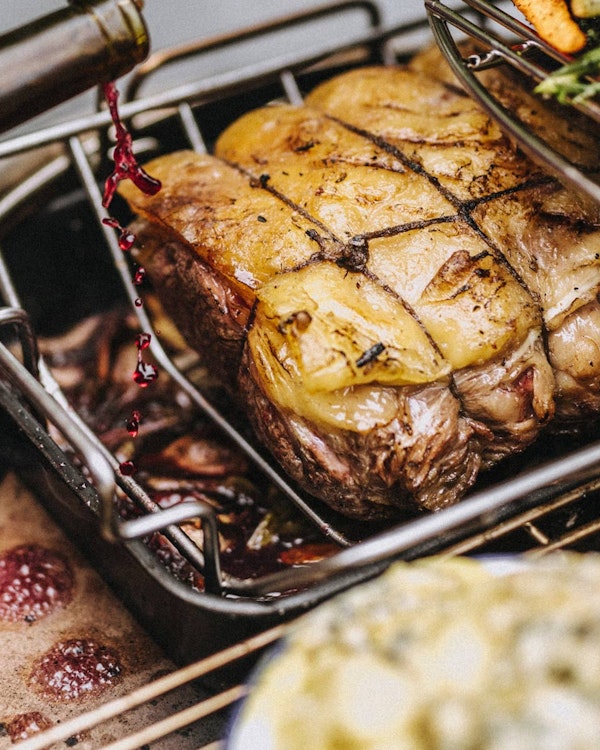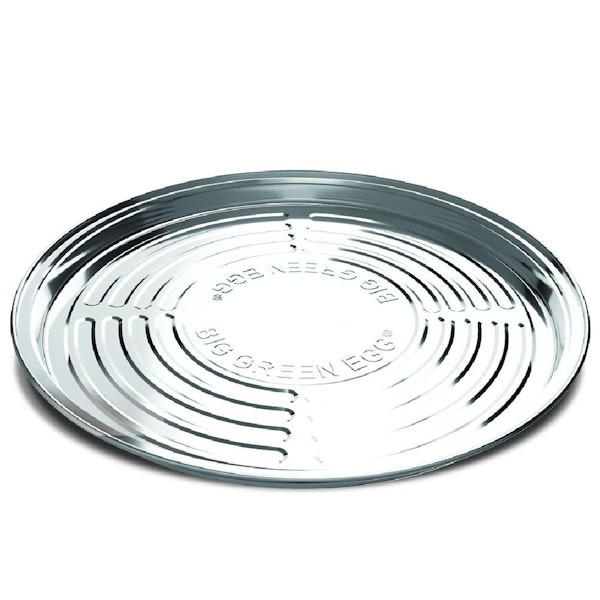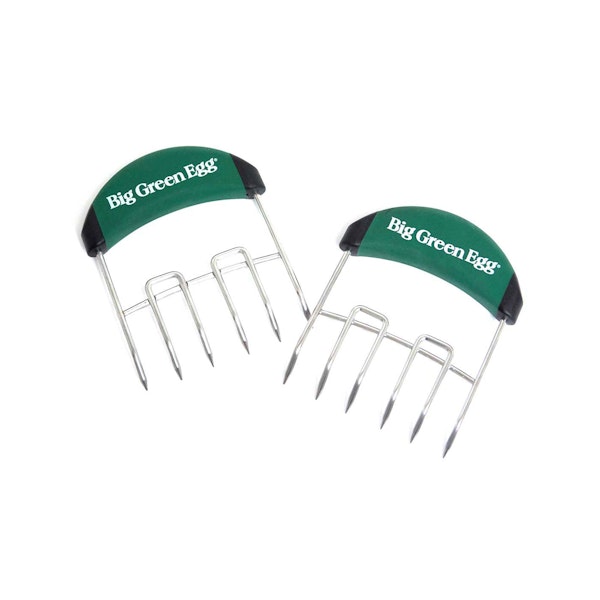OVERVIEW
The first step to a memorable Christmas turkey is to buy a quality bird, such as a Bronze. You get incredible flavour from these slow-growing turkeys, which is only enhanced by the moist heat and subtle smoke of the EGG. Always cook to temperature and not time.
SET UP YOUR EGG
Set up your EGG for indirect cooking with the ConvEGGtor in a legs-up position topped with the Stainless Steel Grid. Target temperature is 180˚C.
Season the turkey with sea salt and cracked black pepper. Remove any giblets and add them to a Drip Pan. Massage the bird all over with butter.
Chop the vegetables and place them in the Drip Pan to provide the aromatic base for a gravy.
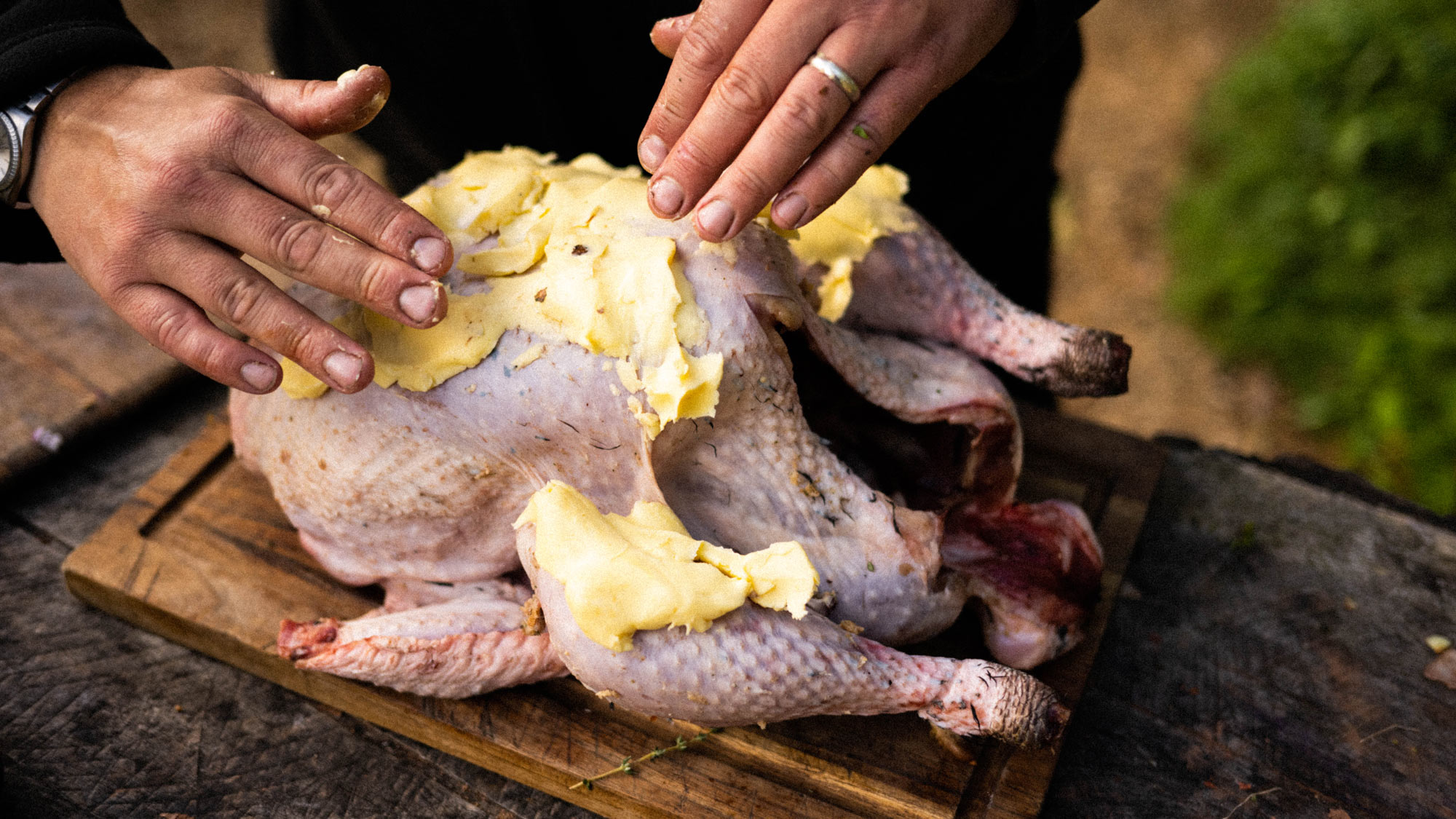
If cooking on a Large or XL EGG, place a Roasting Rack onto the Drip Pan above the veg. Cradle the turkey in the rack breast-side down. If using a MiniMax, place the bird directly on top of the trivet of vegetables.
Pour cold water over the vegetables and giblets. This will create the stock for your gravy and help keep your turkey beautifully succulent.
COOK YOUR TURKEY
When the EGG is up to temperature, position the turkey towards the back of the grid and leave it to roast for 1 hour.
Remove the Drip Pan, pick up the turkey by the legs and carefully flip it over to sit breast-side up. Top up the stock with more water if needed. Return the Drip Pan to the EGG.
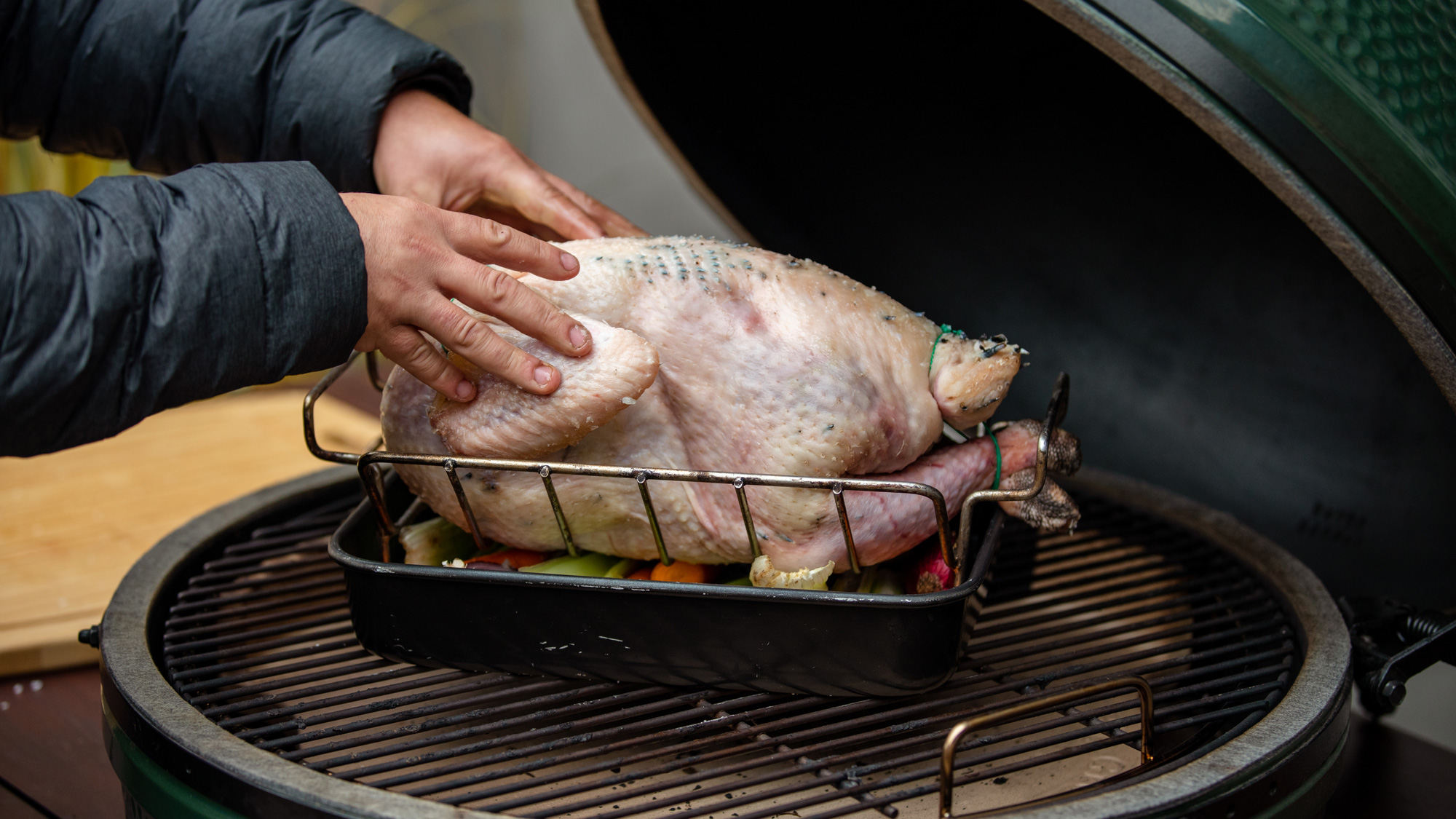
After a further 30 minutes, use a Quick Read Thermometer to take a temperature reading at the thickest part of the leg. Continue to take regular readings at 10-15 minute intervals.
Once the reading reaches 63˚C, remove the turkey from the EGG and rest it on a wooden board, uncovered.
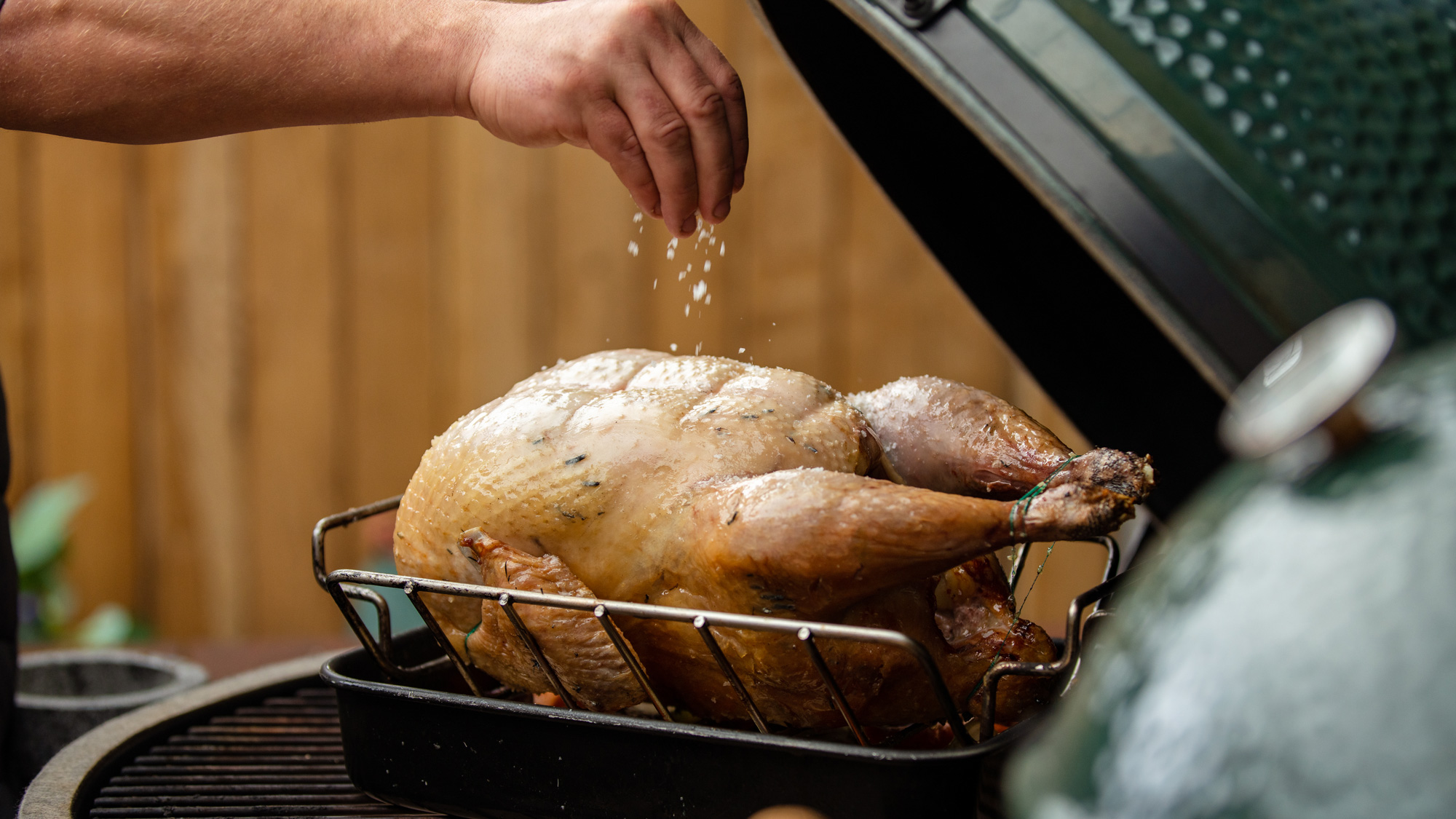
MAKE THE GRAVY
Strain the Drip Pan into a saucepan, forcing as much of the soft veg through the sieve as you can. Over a high heat, reduce the gravy to your preferred consistency. Season to taste.
While resting, the bird’s internal temperature will continue to rise; you’re aiming for a final temperature of 70˚C in the legs and 63˚C in the breasts.
Once it’s there, you’re ready to carve. For maximum juiciness, completely remove the breast from the turkey and slice it against the grain.
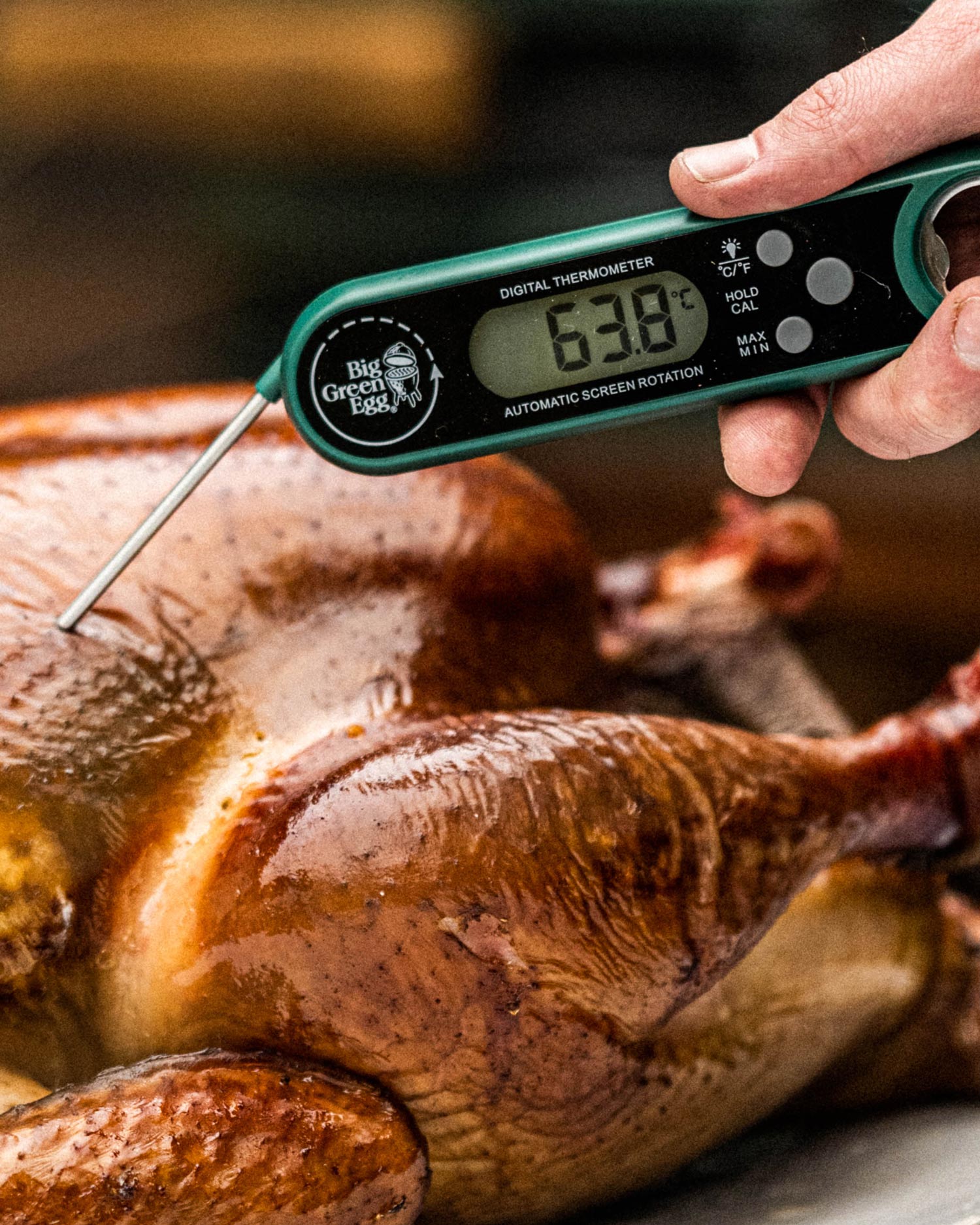
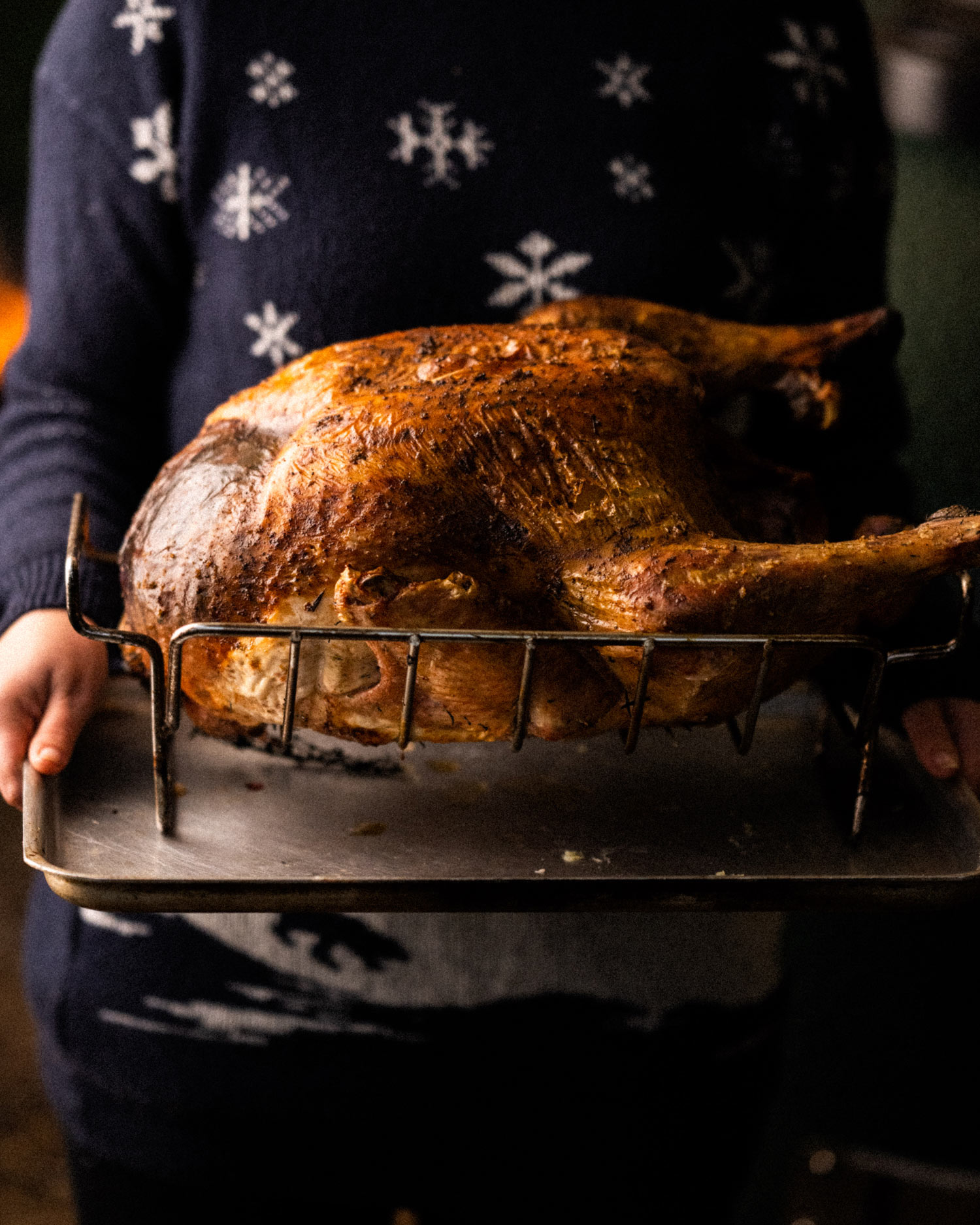
Top 10 Turkey Tips
Not all turkeys are created equal. Always invest in a slow-growing, free-range bird. Not just because it will have had a better quality of life, but because it will have had time to develop a depth of flavour a million miles from the dry blandness of industrially reared turkeys.
Cold turkeys will seize up when cooked. Take yours out of the fridge 2 hours before you intend to cook it, so that it can reach room temperature.
Flavour starts with the fuel. Make sure you choose a quality lumpwood charcoal, free from accelerants and chemicals that will taint the flavour of your turkey.
Consider adding a handful of woodchips or chunks. Pecan or Apple work particularly well. Simply soak them in water and add to the coals at the start of your cook.
Place your turkey in the EGG on a Roasting Rack so the heat can circulate all around it and the skin is able to crisp up.
Cook the turkey breast-side down at first. The juices from the bones will run down into the breasts, keeping them nice and moist. Flip the bird over half way through.
Add a roasting tray underneath with chopped veg and 2 litres of water, so that you can catch all the cooking juices and make delicious gravy.
Once your turkey is cooking, leave it alone as much as possible. Try to resist opening the lid of your EGG as this will affect the internal temperature. Just set it to 180°C, and walk away.
Always cook to temperature, not time. Invest in a thermometer so that you can take your turkey out when the legs reach 70°C and the breasts reach 63°C.
For tender meat, be sure to rest, rest, rest. If you cut into a very hot piece of meat, all the juices will come pouring out of it. By allowing your turkey to rest for 30 minutes to an hour, you give it time to relax and retain its juices. Removing the breast from the turkey and slicing it on a board against the grain will also do wonders.
